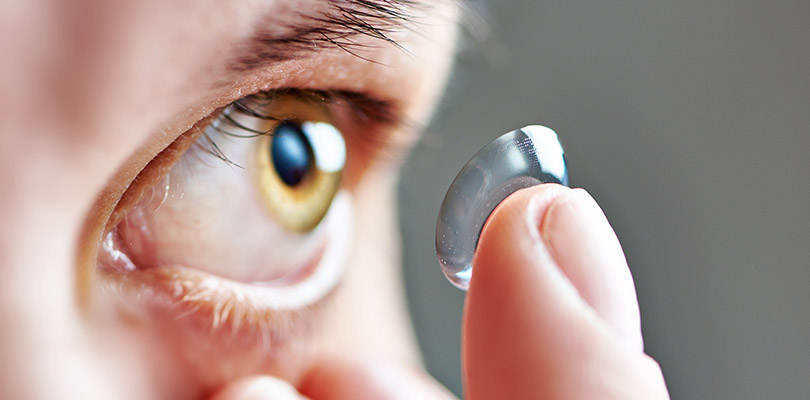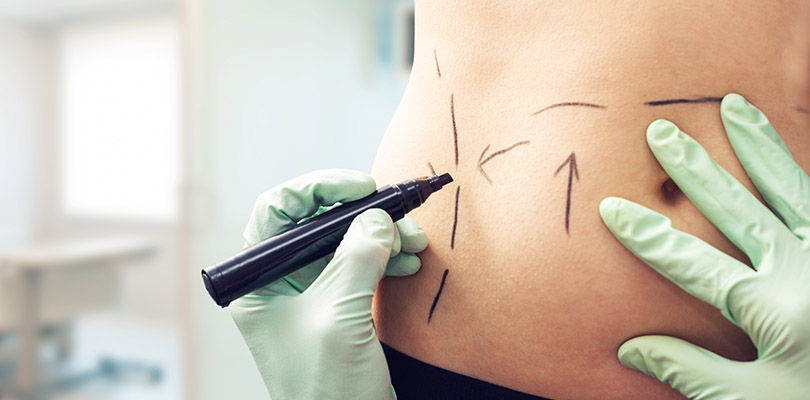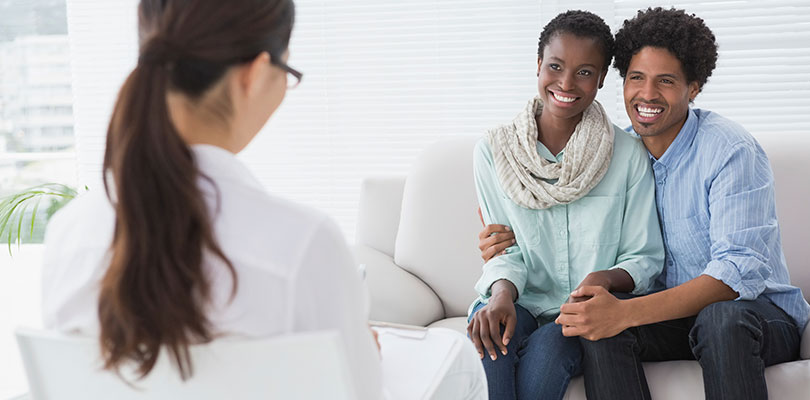What You Need to Know About Contact Lenses for Dry Eyes
Are you a contact wearer who suffers from dry eyes? If you’ve experienced stinging, redness, and occasional blurred vision, you understand all too well how uncomfortable dry eyes can be. You may even hesitate when it comes to putting in your contact lenses. Previously it was considered a no-no to wear your contacts if you had dry eyes, but times are changing thanks to advancements in contact technology.
Ongoing dry eyes run the risk of infection, injury, eye inflammation, and even difficulty with activities (such as reading). A number of things could cause your dry eyes and some can be easily handled with some mindful changes. Typical causes for dry eyes include:
- Improper tear production
- Too much time staring at a screen
- Allergies
- Medication side effects
- Medical conditions
- Exposure to air conditioning or heat
- Poorly fitting contact lenses
- Damage to tear glands or skin around the eyes
- Long periods of time wearing contacts
Types of Contact Lenses for Dry Eyes
Technology is a game changer for people who suffer from chronic dry eyes and want to wear contacts. The use of different kinds of lenses may alleviate the aggravation of dry eyes. Of course, the lens you select should align with what causes your dry eyes in the first place.
Types of contact lenses for dry eyes to consider:
Regular Hydrogel Lenses
Regular hydrogel lenses are made of a flexible hydrogel plastic and are categorized by how much water they contain. These are generally better for people with chronic dry eyes because there is a greater ability for oxygen to pass through the lens and they also hold water better.
High-water content lenses are more likely to cause dry eyes – they offer more moisture up-front, but eyes dry out faster. Higher wetness level lenses may draw additional moisture out of the eye to maintain the lenses’ water content. A low level of moisture may be better in some cases.
Try out lenses with different water contents to find lenses that work for you.
Silicone Hydrogels
Silicone hydrogels require less moisture than traditional lenses and help the eyes breathe better by increasing the oxygen supply to the eye.
These types of lenses were created to reduce instances of hypoxia (when there are symptoms that occur due to lack of oxygen to the cornea). These lenses are more expensive than others, but they are potentially more comfortable.
Rigid Gas Permeable
Rigid Gas Permeable (RGP) lenses are harder than their hydrogel counterpart; they also allow a healthy flow of oxygen. Most gas permeable lenses incorporate silicone and can be made larger than some lenses. The benefit of the larger lens is that they fit closer to the eye’s surface, enabling a more secure fit.
RGPs are not as immediately comfortable as the softer lenses and require some getting used to. It is argued that RGP lenses have better vision, durability, and last longer since they resist the buildup of protein.
Plastic surgery has been around longer than you can imagine–from the late 1800s to the modern age, the history of plastic surgery will fascinate you.
Wearing Contact Lenses With Dry Eyes
Previously, contact lenses got in the way of the normal function of the tear film in the eye, which made dry eyes feel even thirstier.
There are still brands and types of lenses that make wearing contacts uncomfortable. Now, thanks to new kinds of lenses, you can still spend a day in your contacts, even if you suffer from dry eyes.
A small step like putting in rewetting drops before you put in your contacts can make a world of difference. Keep using the drops during the day to keep your eyes moist.
Be kind to yourself; if your eyes are sore, avoid contacts temporarily and wear your glasses instead.
Can Contact Lenses Help Dry Eyes?
New technologies have reduced contact lens-induced dry eye (CLIDE) symptoms. Some manufacturers have developed lenses with the purpose of reducing dry eye discomfort.
For instance, Orthokeratology is a lens-fitting technique where you wear prescribed Gas Permeable contact lenses while you sleep. The lenses reshape your cornea, helping correct refractive errors (like nearsightedness) to help improve your vision and potentially eliminate the need to wear lenses at all (meaning any CLIDE symptoms can be sidestepped).
Eye Drops With Contact lenses
Most eye drops are available over the counter if your dry eyes are particularly bothersome. The drops mimic tears and can help lubricate your eyes on an ongoing basis throughout the day, even with contacts. There are a few different types of drops:
- Preservative-free: for reasonably dry eyes and for folks who are sensitive to preservatives.
- Preservative: as the name suggests, these drops have preservatives. and are meant for people who suffer from moderately dry eyes
- Prescription: these are for those with severe dry eyes and these drops are not available OTC. Prescribed drops lubricate the eyes and assist in stimulating tear production.
Lens Care Solutions
Proper cleansing, care, and storage of your contact lenses will help alleviate your dry eyes.
Hydrogen peroxide-based contact solutions are best for disinfecting lenses, but if the peroxide stays on the contacts after disinfecting, more eye irritation may be the result.
If you think your solution may be the problem, try switching to another brand.
Recommendations for Wearing Contacts Lenses With Dry Eyes
- Replace your contact lenses at regular intervals to avoid lens soilage (caused by a buildup of protein deposits). Switching from a monthly to a biweekly lens is better for your eye health. Switching to daily disposables is even better.
- Switch the type of lens you use. If you’re using an RGP lens, you may be better suited to a silicone-based hydrogel.
- Change the brand of contact lenses you use. Different brands bring different results.
- Switch to a different lens solution (for daily disposables, this is a non-issue).
If your dry eyes become problematic, don’t hesitate to get your doctor involved. Remember that it’s possible that you haven’t been using the right contact lens products, so don’t hesitate with experimentation with other brands and products. Once you find the right products, your dry eyes will be much happier wearing contact lenses.







